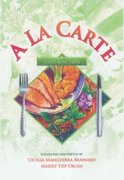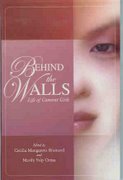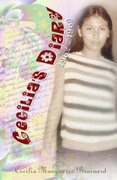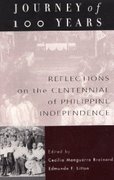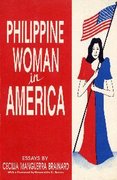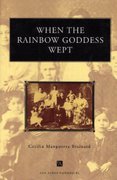
There is I think a little space in my heart that was carved out after our visit to Cappadocia, and that space is filled with images and reflections about Capadoccia.
The first time I consciously heard of Cappadocia was from our friend, Doug Noble, who had shown us pictures of early Christian churches carved into rocks. They were interesting pictures but flat pictures only hint at what is actually there. Pictures can never capture the real essence of Cappadocia.

Cappadocia is like another world. First there are the fantastic rock formations that make me think of Bryce. Cappadocia has a fairy tale, hobbit feel. According to our guide, volcanic tufas that eroded caused the peculiar columns and fairy chimneys.

These rock formations had been used by early Christians as hiding places from the Romans. We visited an underground city that went down four levels and in the lower levels there were huge circular wheel-shaped rocks that could be rolled to close off a tunnel entry. There were several of these, and since the tunnels only allowed one person at a time, the Christians could even trap their pursuer by rolling shut two of these round rocks. The circular rocks remind me of the rock that closed off Jesus' tomb. As to the network of tunnels and larger rooms, think of a hamster or gerbil habitat - small cave-like rooms connected by narrow tunnels.

We visited an outdoor museum that had been occupied by early monks, and there were chapels carved into these rocks. There were small rooms, a dining room, and what may have been a kitchen since the rock ceiling had blackened.


The Christians fled from the Romans who persecuted them; and they found refuge in Cappadocia. This was something that was not taught to me when I was in Catholic school. I can't blame my teachers because they probably didn't know either. The orientation was Western: everything happened in Rome, or Jerusalem, and pilgrim places like Lourdes and Fatima were hyped up more than the sites in Israel and in Turkey. It had never really occurred to me that Turkey was very much part of the world of Jesus, Mary, the apostles and early Christians. In my imagination, they roamed around Jerusalem and Galilee, with St. Paul being an exception since he came from Tarsus and preached to the Ephesians.


In Cappadoccia we also went ballooning, one early cloudy morning and the 27 of use were so certain that
a) the balloon-people were going to kill us just to get their $200 per person; and
b) we'd see nothing but clouds. After waiting around under a thin drizzle, we were herded into the baskets of gigantic colorful balloons and up we went. And wouldn't you believe it? - the sky had cleared up and we had grand views of the Goreme Valley with its mountains and strange formations and fairy chimneys. The feeling of lifting up gently and seeing this enchanting world was unreal, magical. Our balloon pilot was a young former F-16 pilot, handsome and quickly the darling of the women. He said he wanted to come to the United States to visit his ex-girlfriend in Seattle, and he wanted to pilot some ballooning in some part of the US because this would give him the credential to balloon in any part of the world.


We saw
Whirling Dervishes. This was not a performance as we had seen in Egypt where a guy had hoops around his skirt and he pulled it up and down so he looked like some kind of doll. This was a religious ceremony - or so we were told; and we were forbidden to clap. The ritual began with the eulogy, followed by the haunting music, and the appearance of the men wearing black robes. Later they removed their robes and danced their prayer, head tilted, one hand up, another pointed down, and always turning in the same circular direction. Watching them was mesmerizing. I was surprised to learn that they do not want to experience ecstasy but want to remain grounded, even as they do their meditative dancing.
We saw a folkloric dance performance, which was better than the one we saw in Istanbul. What Istanbul offered were the topnotch belly dancers, the star of whom was Asena, now three months pregnant and about to stop dancing, gossiped our guide. (Belly dancing is another thing to mull over - why, in a culture that requires women to dress modestly and cover their heads - why do they have belly dancing????)

When we left Cappadocia, it felt as if the tour was ending. The highpoint had passed and we counted the days until we'd get home. We saw Ankara and kidded around that we'd sent President Obama ahead to make sure things were fine for us. We got an earful about Mustafa Kemal and saw his bombastic funereal monument. We had a nice dinner in the citadel, in a rickety ancient two-story house where the chef personally catered to us. And then there was the long trip back to Istanbul, made pleasant by the pretty landscape and good company. Back in Istanbul, Lauren and I hurried to see the Dolmabahce Palace, a very European structure built by a Sultan, and which has a 4 1/2 ton Bohemian chandelier, the largest in Europe. What impressed me most was the toilet which was a hole in the floor- made of marble, but without the crapper. Imagine the surprise of the high level guests who went to the restroom and found a hole in the floor!


And then the trip to Turkey was over. It took 21 hours to get back home: Istanbul to Paris to Los Angeles.
I am still processing what I saw, did, and experienced. There is much to think about.
P.S. Do not ever buy from those factories the Tour Directors take you to - they are extremely overpriced!
(This article is also published in
http://www.iwasinturkey.com)

























































